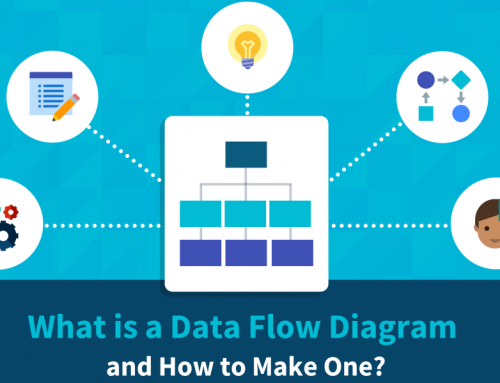Metadata Management 101
“Metadata management is the foundation of enterprise data governance”, this is a phrase we often hear when implementing data governance strategies. As an enterprise manager, an IT person, or a practitioner in the data industry, the primary task of understanding data governance is to understand metadata and metadata management. In this article, we will sort out the concept of metadata and help you understand the role of metadata management in organizations.

Metadata Management
What is metadata?
Simply put, metadata is data about data. Metadata is generated each time data is captured at the source. Metadata is accessible to users, can be moved within an organization, can be integrated or augmented with other data from other sources, and can be configured, cleaned, and analyzed. Metadata is invaluable because it provides information about the attributes of data elements that can be used to guide strategic operational decisions.
What does metadata do?
- Be used to integrate all kinds of complex and various information.
- The semantic layer it defines can help end users break down the data stored in the system.
- Support the dynamic change of requirements and the flexibility of the performance (interface) of the system.
- Improve and guarantee the quality of data.
- Support the development and application of a variety of tools.
- Improve system security.
- Improve the intelligence of the system.
What is metadata management?
Metadata management, as the name suggests, is the collection and management of metadata. With the development of the Internet, the data collected and used by enterprises every year has grown exponentially in recent years. The data forms in many enterprise big data environments are diverse and the standards are not uniform. It is difficult to collect, disseminate and share these different types of data. This will inevitably require enterprises to carry out unified standard management and control of these data, that is, metadata management.
What are the benefits of metadata management to businesses?
With metadata management, businesses can gain the following benefits:
- Improve data quality: Discover data issues and inconsistencies in integrated data sources or targets in real time, improving overall data quality by increasing insight and time to fix.
- Accelerate time to insights: Reverse the current 85/15 rule, which keeps high-paying mental workers too busy finding, understanding, and resolving errors or inconsistencies without actually analyzing the source data.
- Regulatory compliance: Regulations such as GDPR, HIPAA, PII, BCBS, and CCPA all have data privacy and security requirements, so there is a need to tag sensitive data, document its data lineage, and describe its flow for traceability.
- Digital transformation: By understanding what data exists and its potential for value, digital transformation can be facilitated by enhancing digital experiences, enhancing digital operations, driving digital innovation, and building digital ecosystems.
- Enterprise collaboration: Business units drive alignment between data governance and corporate strategic goals, while IT handles the technical operations of data management, opening the door to discovering, trusting, and using data to effectively achieve organizational goals.
- Improve work efficiency and reduce costs: If you can rely on automated and repeatable metadata management processes, productivity will increase. According to reports, the efficiency of coding has increased by more than 85%, the efficiency of metadata discovery has increased by more than 70%, the efficiency of data design has increased by 50%, the efficiency of data conversion has increased by 70%, and the efficiency of data mapping has increased by 80%.
- Accelerate project delivery: Big data deployments, data vaults, data warehouse modernization, cloud migrations and more are up to 70% faster.
Why is metadata management so challenging?
Creating and maintaining an enterprise-wide view of underlying metadata and making it easily accessible is complex for a number of reasons:
- A large number of data types and data sources exist today, and they were not designed to work together.
- Lack of policies, processes and tools to define and control data access by role and across workflows.
- Data infrastructure is a patchwork of disparate technologies and poor documentation over time, with little regard for downstream integration.
- Traditional manual methods are costly, time-consuming, error-prone and unable to keep pace with the evolution of dynamic enterprise data management infrastructures.
- Limited or missing business context, common terminology not standardized and not adopted across the enterprise.
As a result, applications and initiatives that rely on a robust data infrastructure can be compromised, leading to errors in analytics and insights. Without the full use of analytics tools, an organization cannot become a data-driven organization, or worse, it may end up doing the opposite.
What are the aspects of the metadata management platform architecture?
- Metadata collection service: Able to adapt to heterogeneous environment, support from the traditional relational database and big data platform from the data collected to produce system application to the data to the data processing system reporting system the full amount of metadata, including the data in the process of the entity (a description of the system, library, tables, fields) and the logic in the process of data entity processing.
- Metadata access service: Metadata access service is an interface service provided by metadata management software. It generally supports interface protocols such as REST or Webservice. Metadata access services support the sharing of enterprise metadata, which is the foundation of enterprise data governance.
- Metadata management service: Realize the model definition and storage of metadata, package it into various metadata functions at the functional layer, and finally provide external application and display. Provide metadata classification and modeling, data lineage and impact analysis, and facilitate data tracking and retrospective.
- Metadata analysis service: The applications of metadata generally include data maps, data lineage, impact analysis, and full-chain analysis.
Conclusion
Thank you for reading our article and we hope it can help you to have a better understanding of metadata management. If you want to learn more about data management, we would like to advise you to visit Gudu SQLFlow for more information.
As one of the best data lineage tools on the market today, Gudu SQLFlow can not only analyze SQL script files, obtain data lineage, and perform visual display, but also allow users to provide data lineage in CSV format and perform visual display. (Published by Ryan on May 28, 2022)
One Comment
Leave A Comment
If you enjoy reading this, then, please explore our other articles below:




[…] big data environment, if the enterprise does not manage a variety of complex information through metadata management, it is difficult to effectively utilize the information. However, many enterprises gradually find […]